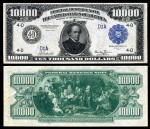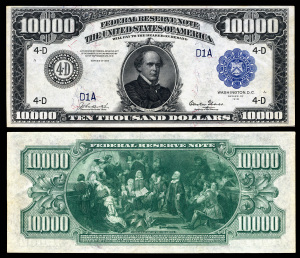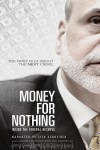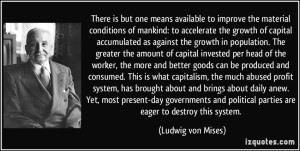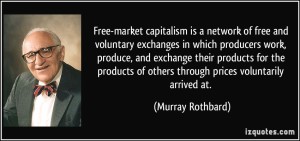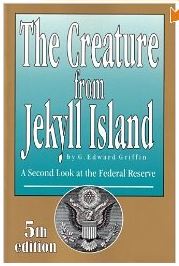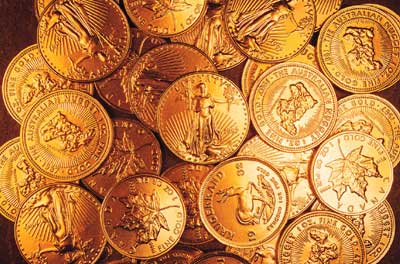submitted by jwithrow.
Journal of a Wayward Philosopher
The Majesty of Childbirth
October 27, 2014
Hot Springs, VA
The S&P is checking in at $1,964, gold is at $1,228, oil has dipped down to $79, bitcoin is trading hands around $355, and the 10-year Treasury rate is at 2.25% today.
October has been the most volatile month of 2014 for U.S. stocks. The Fed is supposed to end QE3 (quantitative easing) this month which has investors nervous. Does the market tank when QE3 ends as it did with the end of QE1 and QE2? Or is the economy all better and ready to resume some semblance of normalcy?
My guess: get ready for QE4.
Mr. Market tried to clean out the gutters back in 2008 by liquidating unsustainable debt but the Fed intervened. With their quantitative easing chicanery, the Feds not only prevented Mr. Market from liquidating bad debt, they also piled even more rotting debt on-top. Without QE, Mr. Market would be free to begin the healing process which requires clearing out bad debt and insolvent entities. But most of the bad debt lives on the balance sheets of the federal government and now the Federal Reserve (transferred from Wall Street) and liquidating this debt would reveal the fundamental insolvency of these entities.
How best to hide insolvency? Print money to pay the debts! Hence: QE4 coming soon – probably early 2016.
Shifting gears: Madison made her entrance last week!
She was born on October 20 at 9:59 pm right here in Hot Springs, VA.
In our dining room.
Oh don’t worry, we put the dining room table out in the garage and replaced it with an Aqua Doula pool and a queen-size mattress.
The result: a healthy 7 lbs 11 oz baby girl born completely naturally with no invasive interventions or pharmaceutical drugs necessary. Just like childbirth has been done for thousands of years!
Wife Rachel said the homebirth experience has far exceeded her expectations in every aspect.
Instead of laboring on her back underneath fluorescent lights hooked up to an I.V., monitors, pain-killers, and labor-enhancing drugs, Rachel paced back and forth from our Great Room to our kitchen while verbally telling Madison she couldn’t wait to meet her. No one was around to bother her save her husband who valiantly tried to be a breathing exercise leader while also laboring himself to fill up the 170 gallon Aqua Doula pool. Needless to say, Madison did not wait around to test her sea legs and she was born very peacefully on dry land… into her father’s waiting hands.
Upon her birth, there was no one waiting to rush her off to be weighed, measured, poked, prodded, or checked so Madison had to settle for laying in her loving mother’s arms instead. While mother and baby bonded in those first few minutes of life, our midwife and doula worked gently to make sure both parties were in good health as the birthing process neared completion. Once confident in the health of mother and baby, our health care team worked diligently to clean and sanitize the area, provide food and water, do laundry, provide advice, tips, and reassurance, and countless other things that a star-struck father couldn’t possibly pick up on in the most defining moment of his life.
Our midwife and doula monitored the situation and provided sound counsel for roughly four hours post-birth as well. “This is what real health care looks like”, I thought. Our midwife came back out to our house for a 36 hour appointment and then again for a five-day appointment. She also answered several phone calls and text messages at weird hours during the stretch in-between appointments as well.
The result of such wonderful health care service is that both mother and baby are in terrific health despite not having left the comfort of their own home. It will be more than two weeks from birth before mother and baby will need to leave their home for another appointment.
The entire experience has confirmed what we knew all along – that natural childbirth at home is a much healthier and happier alternative to hospital birth for both mother and baby.
Of course few others understood this. Some just shrugged at the eccentricity of such an endeavor. Some turned their nose up in disgust. Some thought us to be ignorant, selfish, and cheap.
What they didn’t see were the countless hours dedicated to learning, study, and research over the course of nine months. They didn’t see the pages turning in the books that were read. They didn’t see the computer screen scrolling as medical studies and articles were mentally consumed. They didn’t drive an hour and a half to natural childbirth classes every Thursday evening for six weeks after a full work-day to increase their knowledge and understanding before driving an hour and a half back home to get ready for the following work-day. They didn’t watch the videos and the documentaries or practice the comfort techniques or study the possible complications and their signs. They didn’t sit up at night discussing emergency plans and precautions. They didn’t give up coffee, tea, and soda (caffeine) or dramatically reduce their intake of processed foods for nine full months. They didn’t eliminate glucose from their diet for a full week in the final week of their pregnancy.
But someone did do all of these things.
Someone put the time, effort, and work in to make sure they were making the best decisions possible and to make sure they were fully prepared for what was to come. Someone decided that she would be responsible for educating herself first rather than being wholly dependent upon the status-quo.
Someone decided she would be Super-Mom.
To her I pledge my eternal love, respect, and service.
Joe Withrow
Wayward Philosopher
For more of Joe’s thoughts on the “Great Reset” and regaining individual sovereignty please read “The Individual is Rising” which is available at http://www.theindividualisrising.com/. The book is also available on Amazon in both paperback and Kindle editions.


